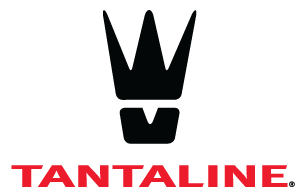What is Tantaline treatment?
Tantaline treatment - a process of applying a thin (around 50 microns) layer of the metal tantalum on the surface to significantly enhance corrosion resistance of the material. You can find more detailed information on our Technology page
What is the difference between Tantaline and other tantalum coatings?
Tantaline utilizes a patented Chemical Vapor Deposition (CVD) process to apply a thin layer of tantalum onto the surface of materials. This process involves the thermal decomposition of precursor gases to form a pure tantalum surface. As a result, tantalum atoms diffuse into the substrate creating an inseparable nanoscale surface alloy. Competing tantalum coatings (sprayed or dipped) use different methods and cannot guarantee such a high damage resistance, as Tantaline treatment.
What chemical processes underlie the Tantaline treatment?
Chemical vapor deposition (CVD) - a process when a solid material is deposited from a vapor by a chemical reaction occurring near a heated surface
What are the benefits of Tantaline treatment?
Tantaline significantly enhances the corrosion resistance of materials, it allows for operation in extremely aggressive environments for extended periods. This in turn increases component lifetimes and reduces unscheduled downtime.
What materials can be covered with Tantaline treatment?
For now, the list of materials which could be treated with Tantaline is the following (even though we are currently working on other variants):
- Austenitic stainless steel 304,316
- Super austenitic stainless steel alloy 20
- Oxygen free copper
- Tantalum
- Graphite
- Reinforced carbon CRFC
- Titanium
- Mild steel<0,2% C – on the best effort basis
If your material in not in the list, maybe we didn´t try it yet? Just send us your request.
How can I find out if the Tantaline treatment can be used for my part/material?
Our web page includes examples of the parts we have treated. In all cases we recommend you send us a request with the technical drawing
Can you give examples of the aggressive substances where Tantaline is effective?
Tantaline treatment has shown excellent anticorrosion resistance against the following acids/substances:
- Sulfuric acid H2SO4
- Hydrochloric acid HCl
- Hydrogen sulfite H2S (sour gas)
- Carbon dioxide CO2 (acid gas)
- Formic acid HCOOH
- Acetic or ethanoic acid CH3COOH
How can you guarantee, that Tantaline treatment will resist corrosion?
Tantalum is known for its superior resistance to chemical attack. Combined with the proprietary Tantaline process, we produce a surface with unrivalled corrosion resistance. We are so confident that each part is tested by immersion in hot acid for 48 hours prior to final shipment.
What information should I provide with the RFQ?
To give you our best quotation we need to have a technical drawing of the item to be treated. The drawing must contain all dimensions, material type. Please specify the aggressive media to which the part will be exposed and indicate which areas of the part will be wetted. Send your request and our Sales Department will answer you during 1-2 working days.
If my item has a complicated design, can it be treated?
The CVD technology makes it possible to provide a uniform coating on the items with a complicated design. There are a few restrictions though, so we would recommend to contact Sales Department for advice and a possible quotation.
What is your lead time?
Typically it takes 4 to 6 weeks from receipt and inspection of part.
Is it possible to get a sample for test?
Yes, please contact our Sales Department, they will be willing to send test samples.
Can the Tantaline treated part be welded to other materials?
No, at least not without compromising the corrosive resistant properties. But we can treat parts that are welded prior to treatment.
What kinds of details cannot be treated by Tantaline?
We cannot treat parts larger that 430 mm diameter, 730 mm height. Threads below 4 mm cannot be treated. For threads above 25 mm please contact our Sales Department.
